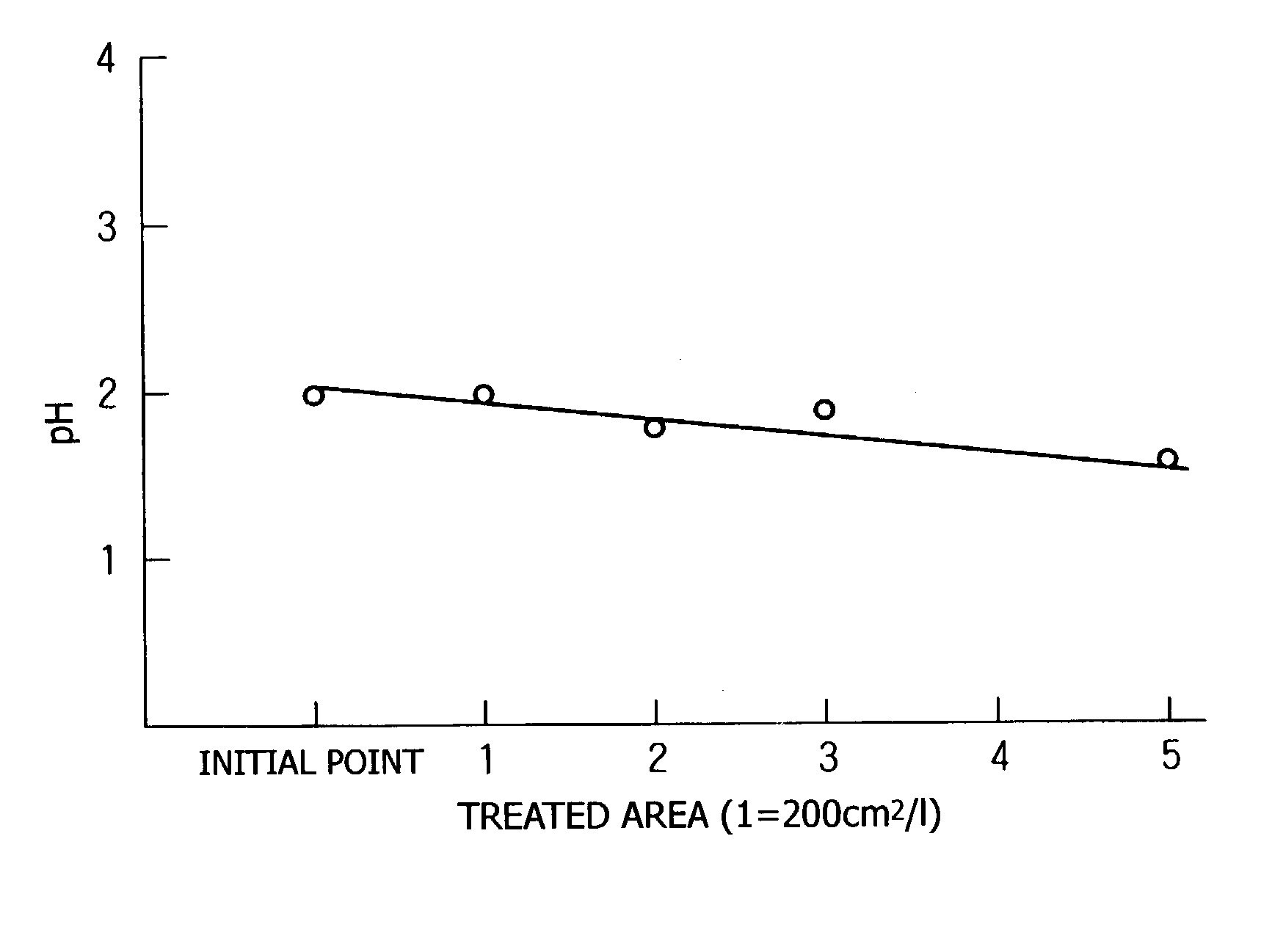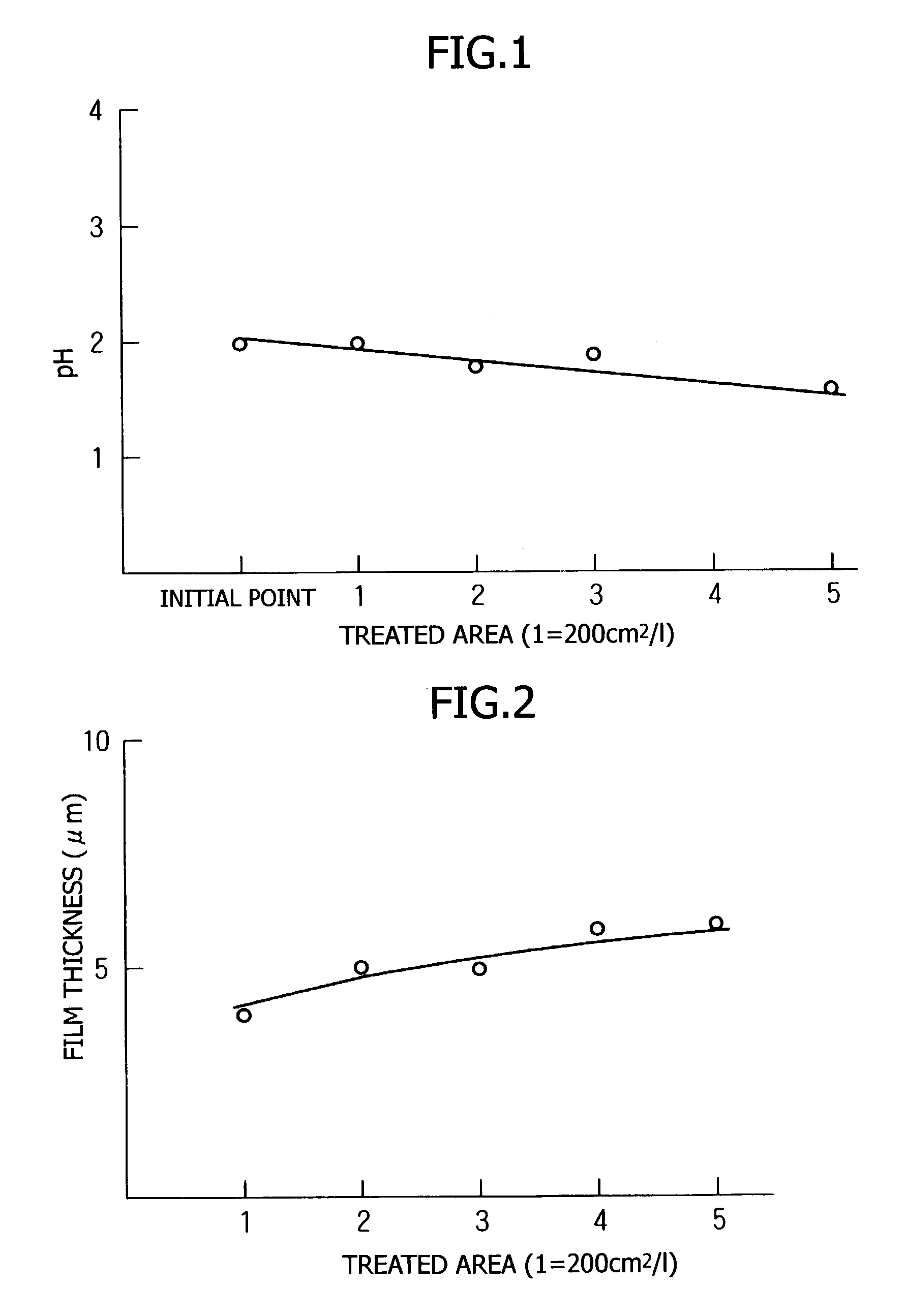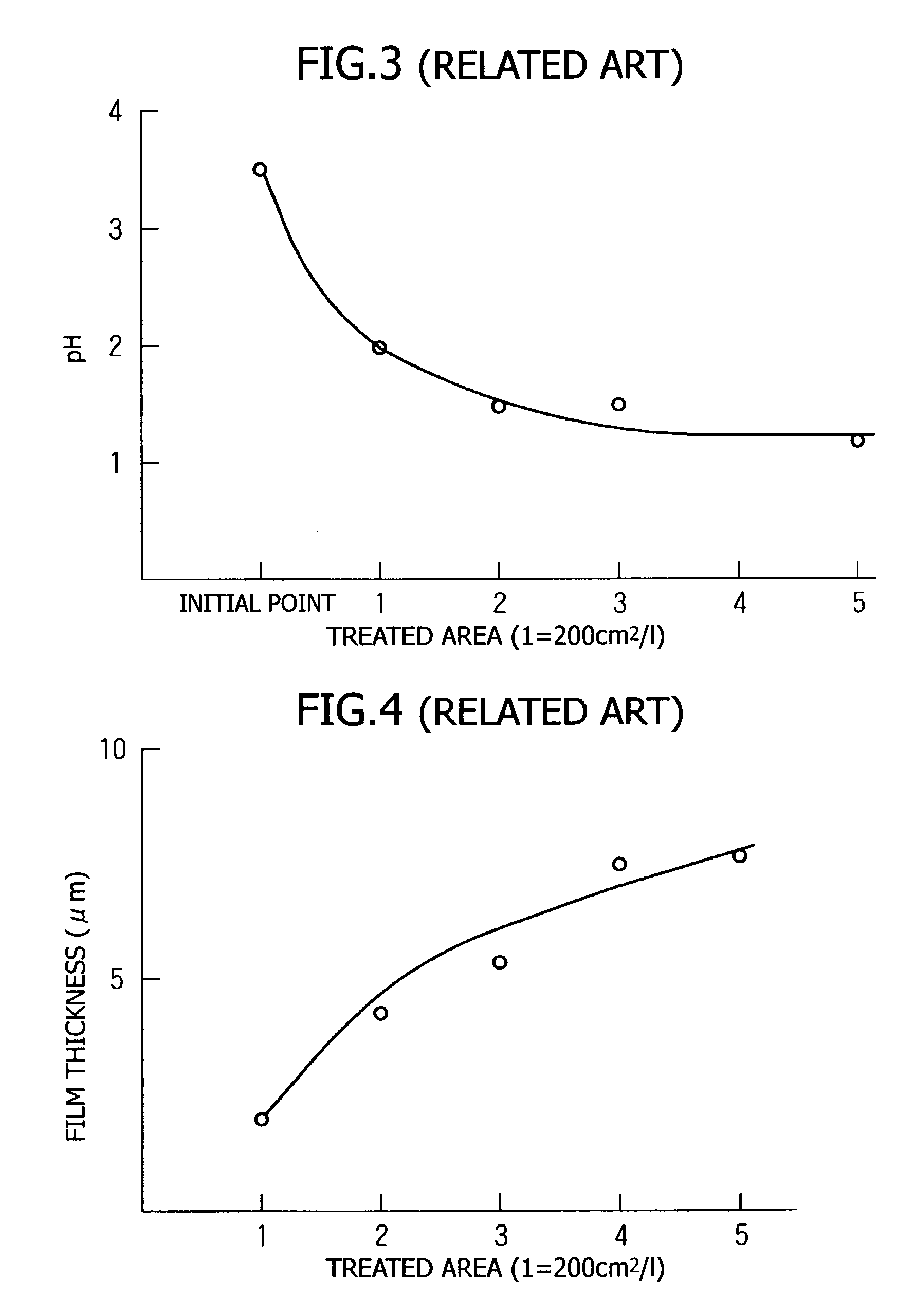Surface treatment method for aluminum or an aluminum alloy and treating fluid used therefor
a surface treatment method and technology for aluminum alloys, applied in the direction of other chemical processes, solid-state diffusion coatings, coatings, etc., can solve the problems of high cost, slow film formation rate, and large film thickness, and achieve high film formation rate, high efficiency, and simple equipment
- Summary
- Abstract
- Description
- Claims
- Application Information
AI Technical Summary
Benefits of technology
Problems solved by technology
Method used
Image
Examples
example 1
[0036]First of all, 0.5 part by weight of ammonium silicofluoride and 1 part by weight of magnesium silicofluoride were added to 100 parts by weight of water. Moreover, 0.05 part by weight of aluminum fluoride and 0.1 part by weight of potassium chloride were added thereto and dissolved therein. This solution was heated to 85° C. and used as a treating fluid. An AC8A-T6 cast aluminum specimen having a surface area of 200 cm2 was cleaned with an organic solvent and a degreasing agent, and then subjected to a surface treatment by soaking it in 1 L of the treating fluid for 5 minutes. It was confirmed by X-ray diffractometry that a film consisting of NH4MgAlF6 was formed on the treated surface of the cast aluminum specimen. Similarly, four cast aluminum specimens were subjected to a surface treatment by soaking them successively in the treating fluid. Moreover, the pH of the treating fluid was measured at the time of soaking each specimen, and the thickness of the formed film (i.e., th...
example 2
[0039]In the preparation of the treating fluid of Example 1, the amount of aluminum fluoride added was varied from 0 to 0.5 part by weight, and the pH of the resulting treating fluid was measured. The relationship between the pH of the treating fluid and the amount of aluminum fluoride added (in parts by weight) or the aluminum concentration in the treating fluid (in mol / l) is shown in FIG. 5. As shown in FIG. 5, it can be seen that, in order to reduce the pH of the treating fluid immediately after bath preparation to 2.5 or less, aluminum fluoride should be added in an amount of not less than 0.02 part by weight (corresponding to an aluminum concentration of not less than 0.0024 mol / l).
example 3
[0040]A reference bath was prepared by adding 1 part by weight of magnesium silicofluoride and 0.5 part by weight of ammonium silicofluoride to 100 parts by weight of water, and aluminum fluoride was added thereto in an amount of 0.02, 0.05 or 0.5 part by weight. Using the resulting three treating fluids, the surface treatment of cast aluminum specimens was carried out under the same conditions as in Example 1, except that, for each treating fluid, the amount of potassium chloride added was varied from 0.01 to 5 parts by weight. Then, the difference between the pH of the treating fluid before soaking the first specimen and the pH of the treating fluid after soaking the fifth specimen (i.e., the range of pH change) was determined. The relationship between the range of pH change and the amount of potassium chloride added is shown in FIG. 6. Moreover, the results obtained by adding 0.05 to 10 parts by weight of potassium hydrogen phthalate in place of potassium chloride are shown in FI...
PUM
| Property | Measurement | Unit |
|---|---|---|
| pH | aaaaa | aaaaa |
| temperature | aaaaa | aaaaa |
| temperature | aaaaa | aaaaa |
Abstract
Description
Claims
Application Information
 Login to View More
Login to View More - R&D
- Intellectual Property
- Life Sciences
- Materials
- Tech Scout
- Unparalleled Data Quality
- Higher Quality Content
- 60% Fewer Hallucinations
Browse by: Latest US Patents, China's latest patents, Technical Efficacy Thesaurus, Application Domain, Technology Topic, Popular Technical Reports.
© 2025 PatSnap. All rights reserved.Legal|Privacy policy|Modern Slavery Act Transparency Statement|Sitemap|About US| Contact US: help@patsnap.com



